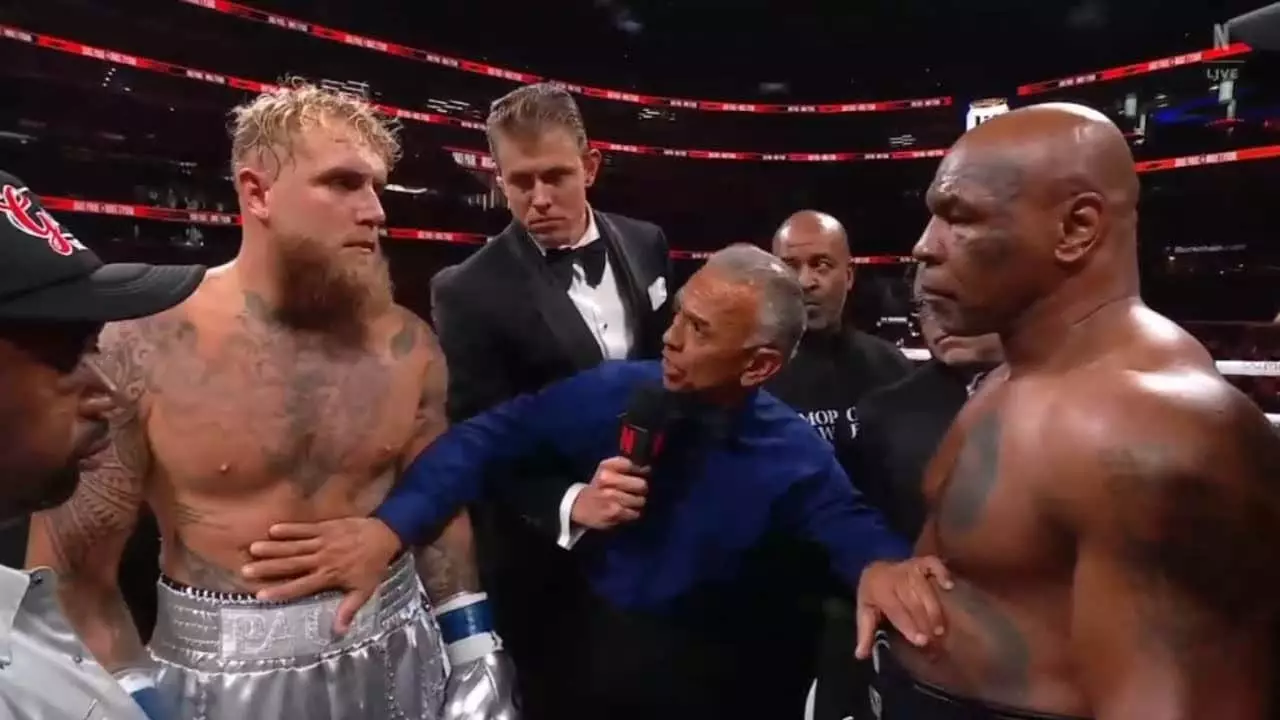Boxing has been a profoundly influential sport, with its legends creating ripples across generations. Figures like Muhammad Ali, Mike Tyson, Floyd Mayweather, and Canelo Alvarez have not only enthralled fans inside the ring but have also transcended the sport to become global cultural icons. Yet, in an age saturated with diverse entertainment options, the urgency for boxing to remain relevant grows. The visibility and engagement of its stars are dwindling when compared to other sports and entertainment avenues. Recently, events like the exhibition match between Tyson Fury and Francis Ngannou, alongside the celebrity boxing bouts featuring Jake Paul, serve as cautionary reminders of how the sport’s allure can fluctuate. Although these events create momentary excitement, boxing cannot rely solely on sporadic blockbuster fights to maintain its prominence.
In today’s media-savvy society, boxing faces a plethora of competition not only from other combat sports like MMA but also from major sporting leagues such as the NBA and NFL, and alternative entertainment channels like streaming services and social media platforms. The urgency to capture and retain public interest is paramount. For instance, the UFC’s success stems largely from its strategic marketing and consistent lineup of events, ensuring that fighters remain in the public eye year-round. Boxing’s top athletes, on the other hand, often appear infrequently, leading to gaps where fans lose interest and turn to alternative forms of entertainment. While UFC stars like Conor McGregor and Israel Adesanya are continuously highlighted through regular events and storytelling, boxing’s elite athletes struggle to maintain similar engagement levels, thus risking their visibility and relevance in the broader sporting landscape.
Instances of Star-Fueled Fights
When boxing’s marquee matchups occur, they can captivate audiences and reawaken interest in the sport. Take Gervonta Davis versus Ryan Garcia, for example. This mega-fight drew massive audiences and set the stage ablaze with excitement. Similarly, Terence Crawford’s spectacular win against Errol Spence ignited fan anticipation for future matchups. These electrifying moments showcase boxing’s capacity to tell compelling stories and deliver thrilling action. Yet, the reality is that such memorable events are too infrequent, creating a perception of boxing stars as rare commodities rather than active competitors. While Canelo Alvarez deserves recognition for maintaining a somewhat frequent fighting schedule, he, too, faces significant challenges in securing compelling matchups that enthrall both casual audiences and hardcore fans.
Jake Paul represents a controversial yet undeniable force in modern boxing. Often seen as a distraction, his approach to the sport encourages dialogue about engagement and visibility. Paul actively promotes his fights and seizes every opportunity to step into the ring, appealing especially to younger audiences who find entertainment value in his persona. His willingness to take risks and sustain a presence in the boxing narrative invigorates interest, highlighting a stark contrast to some more traditional fighters who, while brimming with talent, seem disconnected from contemporary media practices. In this new competitive environment, fighters like Crawford and Davis must adopt a more proactive media strategy, leveraging social media platforms and engaging with fans consistently to ensure they remain top-of-mind.
Proposed Strategies for Growth
For boxing to reclaim its status, its athletes must engage in a more active fighting schedule against intriguing opponents. This entails prioritizing significant battles over routine tune-up fights, even if it involves navigating challenging promotional landscapes. The sport’s current tendency to delay high-stakes matchups until they yield maximum profit often leads to fan disillusionment. A case in point would be the long-awaited clash between Crawford and Spence, which arrived years after it could have captivated audiences. Similarly, anticipated fights like Davis vs. Shakur Stevenson must not be postponed. Regular engagement from elite fighters reveals opportunities for emerging talent in the sport’s ecosystem, keeping fans invested and promoting a culture of consistent action.
Ultimately, boxing is equipped with all the elements necessary for resurgence: exceptional athletes, rich narratives, and a historical legacy. However, it is the responsibility of its stars to actively reshape the narrative and take center stage more frequently. Fighters like Gervonta Davis, Terence Crawford, and Canelo Alvarez must not only excel in their athletic pursuits but also progress into engaging entertainers who resonate with the current cultural zeitgeist. As fans navigate a seemingly endless array of options, boxing’s best need to fight not just as champions of their divisions but as guardians of the sport’s future. By increasing fight frequency, enhancing matchmaking strategies, and employing savvy promotional techniques, boxing has the potential not just to survive but to flourish in the crowded sports landscape of today.

